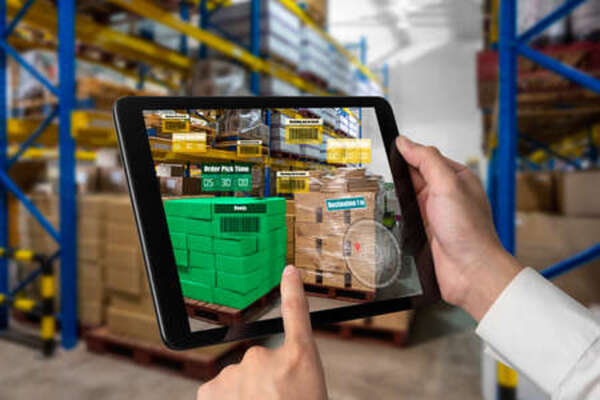Distribution Management Sytems are integral in supplementing secondary sales for consumer goods companies. Distribution supply chains move products through different stakeholders and complicated tracking, warehousing, logistics, and inventory management for manufacturers and distributors. Setting a strategy to win at distribution is essential for the company’s financial performance, longevity and success. These past two years have been a turmoil, and the industry underwent transformations and upgraded the learnings. Here are reasons why consumer goods businesses need to consider switching to cloud Distribution Management Systems to bring more revenue.
Increasing Prices
International Food Policy and Research Institute hold the Russia-Ukraine war as a prominent reason for the increasing raw materials prices across different countries. While some countries saw a shortage of raw materials due to export bans, other countries were affected by increasing costs of raw materials like edible oils, maize, and wheat.
With the increase in raw material costs, end-product prices have no choice but to increase proportionally. Increased pricing has affected numerous developing countries’ economies, combined with the depreciating exchange rates and extreme inflation. The only way to increase sales and distribute products faster is by installing intelligent Distribution Management Software with automation and AI.

Technology and Focus on Digitization
As digitization picked pace post the pandemic, manufacturers are incorporating technology into their operations. The companies’ initial investments in the first 18 months are focused on automating different modules in the supply chain.
Fast forwarding to 2022, investments in digitization focus on strategic and cognitive planning and AI-driven recommendations that help manufacturers make informed choices that promise growth and revenue growth. These recommendation engines ensure businesses have a bird’s eye view of sales and revenue across any hierarchy, region, or market.
The future is about adopting technologies like Augmented Reality, Virtual Reality, Meta, and Image Recognition to enhance digital journeys. These nascent technologies have immense growth potential, making them an ideal investment for businesses looking to scale. With Ivy’s Unified Commercial platform, integrating these technologies into Distribution Management System and Retail Execution Solution will be seamless and enhances your solution’s abilities.
D2C Model and Consumption Pattern
The pandemic helped consumers realize easy shopping options, making them demand more from consumer goods companies. The adoption of these channels devastated the supply chain. Direct-to-consumer models have demolished the three-tier distribution management system in supply chains by eliminating the need for distributors, enabling consumers to shop directly from the manufacturers.
The growth of e-commerce marketplaces led to consumers choosing cheaper deals, faster delivery, and zero delivery charges. The increased accessibility to products online has been causing leakages in the traditional distribution management system models. However, as quick transformations and adaptability grabs the supply chain, the business now has incorporated these as separate channels for enhancing distribution and sales.
With these quickly changing consumption patterns, companies have to move fast. Storing the right products at the right stores is the only way to improve sales and revenue, adding another reason to switch to Cloud Distribution Management Solution to save navigate through these challenges.
Production Shortages
As COVID took over the world, renowned brands ventured into newer product lines to meet the growing requirements of consumers. Post-Covid, labor shortages and the inception of digital technologies in the organization push companies to hire employees adaptable to technological advancements. Rising costs of raw materials and labor shortages have affected production line activities, impacting sales for the company.
A Distribution Management Solution with advanced reporting and insights will help manufacturers during these changing times. Forecasting and Recommendation features will ensure that businesses produce essential quantities to minimize wastage and reduce stock-in-hand of slow-moving products to help sustain reduced sales. This information provides manufacturers with sufficient data to make informed and well-planned decisions to mitigate risks involved in supply chain operations.

Logistics
The effects of the pandemic continue to affect shipping and logistics across countries due to the restricted use of ports and harbors, especially in countries like China and South Korea. The ripple effect passes onto different levels within the supply chain causing products to expire or become damaged during delayed transit which incurs losses for manufacturers.
Technology can contribute towards elevating the overall B2B user experience. An integrated Distribution Management System will help track, locate and plan deliveries ahead of time, helping improve the overall user experience for clients while effectively managing integration with multiple entities from the same application.
Sustainability
Strategic planning for order management, last-mile delivery, and inventory management allowed companies to access untapped markets. Through features like local warehousing and shared-freight shipping, brands have been saving huge revenue costs while achieving a good audience globally.
We at Ivy help manufacturers optimize their distribution management operations, route planning, and route optimization to help them save more on time, productivity, and revenue. These small transformations help our clients reduce their carbon footprints, making them true to the sustainability mission.
Digitization has been synonymous with sustainability. Switching to a Cloud DMS solution will help organizations become green over time by reducing their carbon footprint. It makes data more accessible while allowing companies to save costs spent on infrastructure and servers. Data shows that GenZ consumers prefer sustainable brands over regular ones giving you the last reason to switch to digital.
Declining Sales
As the world moves past the pandemic, consumer hoarding has drastically reduced. European data shows that sales declined 2.1% in the last few quarters, which was still 5.7% higher than in 2019. The data shows the scope for a further drop in sales in 2022 as we slowly return to the new normal. Rising prices and global inflation can impact a decrease in sales. Manufacturers, Distributors, and Retailers must reduce their margins to sustain their business.
As a business, selling is every brand’s biggest priority. Technological advancements can predict and even prevent losses with a Distribution Management system with in-built Artificial Intelligence algorithms that feed off customer behavior data acquired from the market. Investing in a tool that will help you foresee sales and identify buying patterns is the answer to improving sales in the future.
What’s Next?
Despite all these issues driving boardroom tensions constantly in these past two years, the only way forward is to incorporate digital transformation at every supply chain step. It helps businesses save on time, efficiency, labor, advanced insights, and recommendations that work uniquely for each.
Investing in technology helps scale businesses, making them ready for the future. Businesses that switch from merely setting goals and tracking growth factors and KPIs will have the advantage of AI-driven technology to help them flourish and thrive.
Book a Demo with our specialists to help your business grow in the upcoming year. Let us help you achieve your digitization goals for 2023.